Real Italian fantascienza is an authentic expression of Italian culture, which is brainy, nerdy, gutsy and pulp, it’s far-out but down-home, and raw but civilized. I would not proclaim that it’s the best fantasy writing ever created in the world, but it encourages and motivates me.
Bruce Sterling talking to Paul Semel about his collection of fantascienza stories, Robot Artists and Black Swans. My cover design was posted here last September; the book itself is published this week by Tachyon so I can at finally reveal the interior illustrations. Sterling’s collection presents seven stories written by his Italian alter-ego, Bruno Argento, with several of them appearing in English for the first time. The Italian theme informs the design as well as the content, although the associations aren’t always as obvious as they are in my illustrations for Sterling’s earlier fantascienza book for Tachyon, Pirate Utopia, the art and design for which adapted graphics by the Italian Futurists.
As I mentioned in the earlier post, while searching for more recent Italian graphics I came across the work of Franco Grignani (1908–1999), a designer whose most famous work was the Woolmark logo, one of those international symbols that most people will have seen even if few know who was responsible for its creation. The Woolmark’s black-and-white stripes are typical of Grignani’s designs, many of which work variations on the eye-jangling Op Art style pioneered by Bridget Riley. Grignani’s work seemed at first as though it might offer a suitable model for the cover design but it quickly became apparent that his style wasn’t suitable for this title so I went in another direction. Grignani’s influence is present inside the book, however, in the more abstracted illustrations, and in the parallel lines that provide a connecting thread between the stories and their illustrations. The Eurostile fonts used throughout the book also have an Italian flavour. They’re a little clichéd for science fiction but I liked the way they combined SF associations with more Italian design, being the work of Alessandro Butti and Aldo Novarese.
The other design influence, and a more identifiable source, is MC Escher, a choice prompted by the black swans in the title. Escher’s tessellated patterns feature a variety of animals, swans included, so I adapted two of the artist’s swan patterns to prevent the illustration from being robot-heavy. Escher also has an Italian side, as it happens; he enjoyed holidaying in Italy, and the vernacular architecture of the country’s small coastal towns may be found in many of his lithographs. The Escher swans led in turn to a self-indulgent illustration that fills two pages at the front of the book, something that came about after I was playing with Penrose triangles in Illustrator. I’d made a group of these impossible shapes into a construction which a little tweaking turned into a piece of equally impossible architecture, rather like those in the Escher-influenced mobile game, Monument Valley. All that was required to flesh things out was to cover the walls in a brick pattern then add a few swans and robots.
Kill the Moon. A short piece which uses science fiction to address the Italian character, especially the way it often manages to combine vulgarity and cultural excellence in equal measure. The Lamborghini Countach is an anachronism here but the first time I saw one of the white models I thought it looked like a spaceship, and l’ve thought the same about this vehicle ever since. Elon Musk sent a Tesla into space so why shouldn’t a Countach go to the Moon?
Black Swan. The story with the closest resemblance to straightforward SF, and the first one in the book to have Sterling’s occasional home of Turin as a setting. The parallel time-streams discussed in the story are suggested by a logarithmic spiral made from hexagons.
Elephant on Table. In the near future, a Berlusconi-type figure is hiding in a “shadow house” to avoid surveillance by the world’s news media and the world’s intelligence agencies. There’s a silhouette of a cat on the back cover of the book which was going to go in this picture until I looked again at the story and noticed that the cat is described as never having left the house.
Pilgrims of the Round World. The second Turin story, and one which deals with the city as it was in the 15th century. The robot scribe and parallel lines help connect the artwork to the rest of the design. The story also happens to mention the young Leonardo da Vinci so there’s an additional reason for the cover art to appropriate Leonardo’s Vitruvian Man.
The Parthenopean Scalpel. Another historical tale and one with a slightly fantastic edge (so to speak). Includes a well-known figure from 19th-century fiction but I won’t spoil the surprise.
Esoteric City. The final Turin story features a comic take on Dante’s Inferno, with Dante’s part taken by a corrupt auto executive, and the Virgil role given to an Egyptian mummy with a bad temper. The angel figure is the one that surmounts the Fréjus Memorial in Turin’s Piazza Statuto, a monument to the builders of the Fréjus rail tunnel.
Robot in Roses. More science fiction: two centuries from now, a robot wheelchair once owned by a famous Japanese artist is roaming a Europe beset by climate change and occasional wars, creating random works of art. The robot’s progress is being monitored and recorded by a German member of the Ghost Club, a group of “global Beau Monde intellectuals”, who believes the robot to be a new form of artificial life.
Previously on { feuilleton }
• Robot Artists and Black Swans
• Pirate Utopia by Bruce Sterling
• Futurismo!

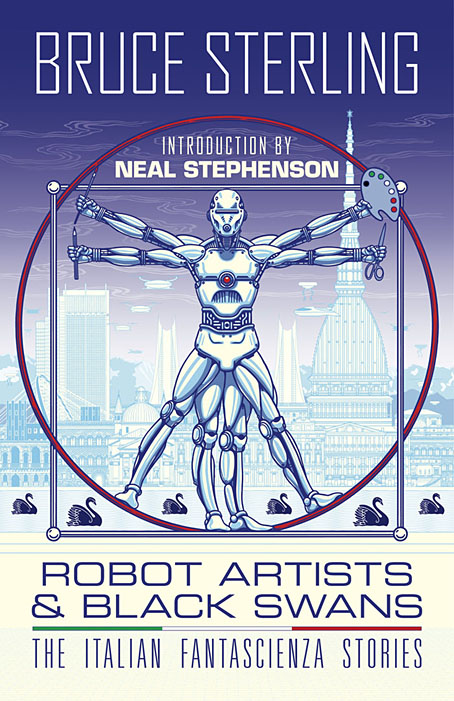
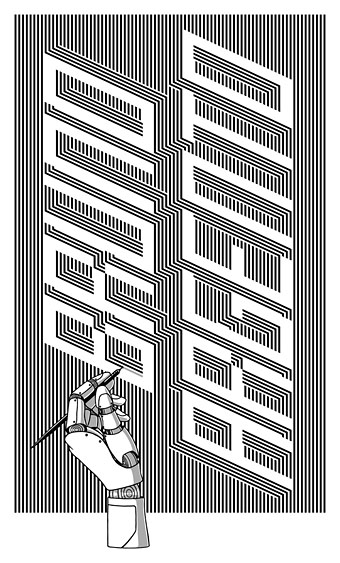
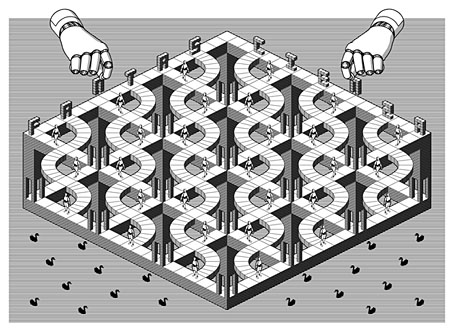
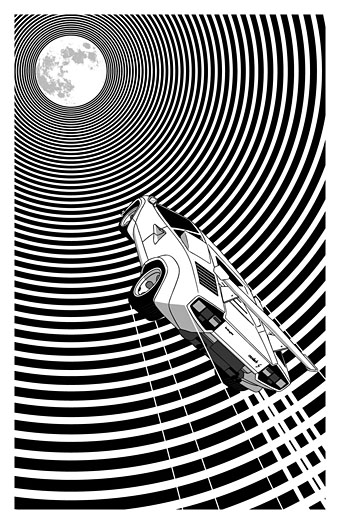
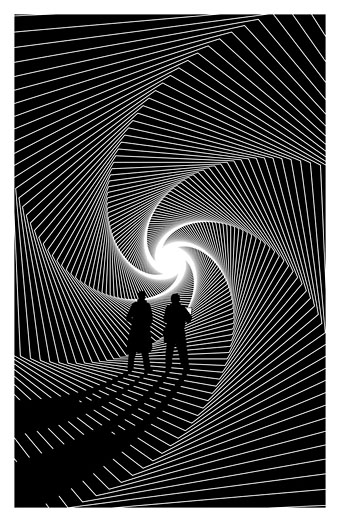
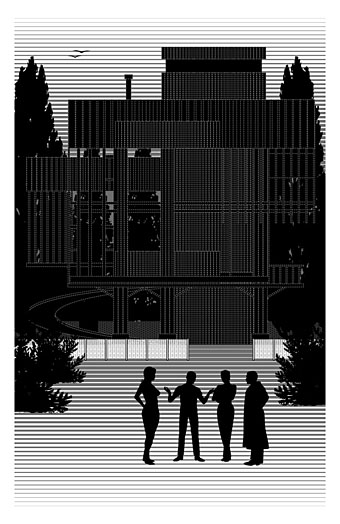
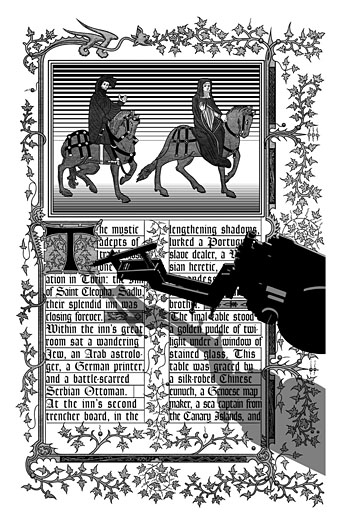
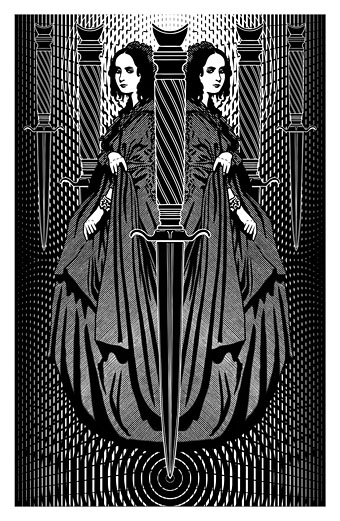
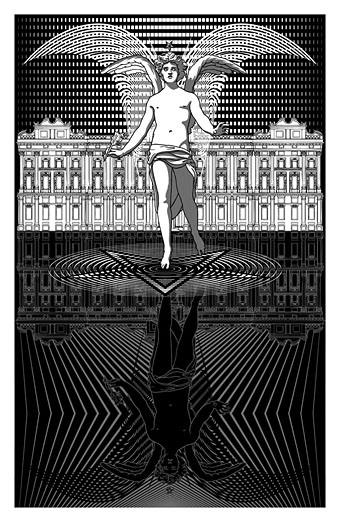
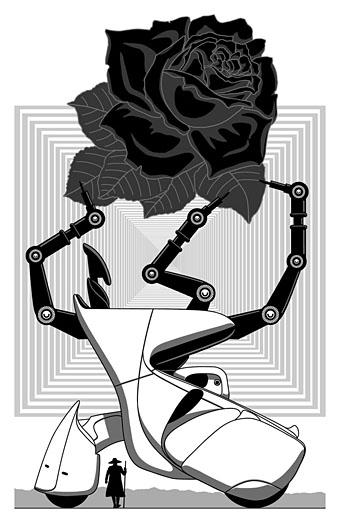
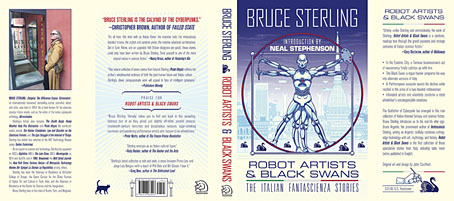
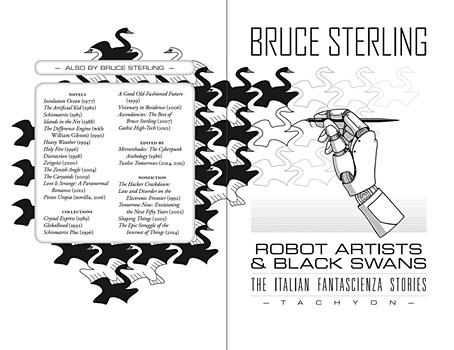
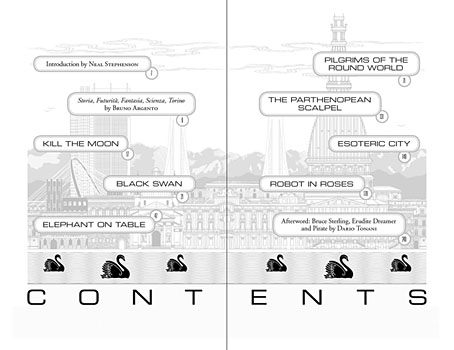
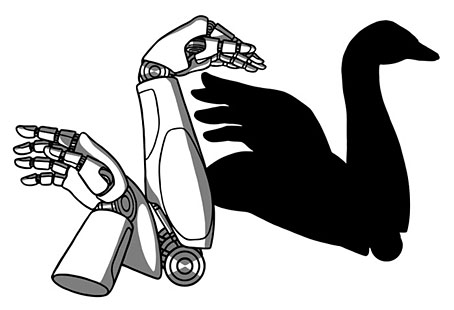
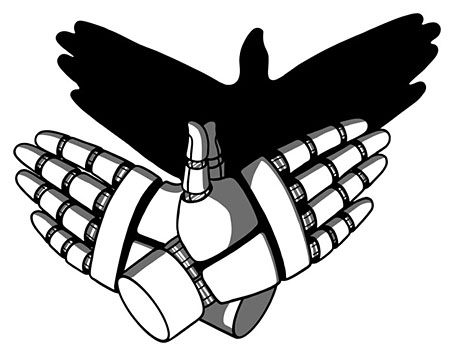
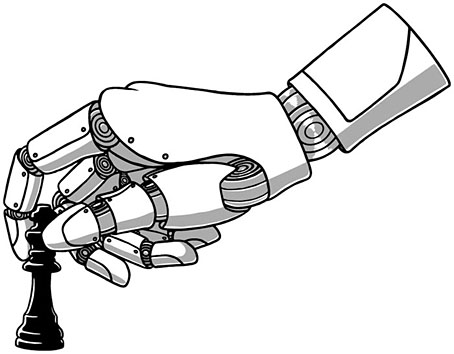
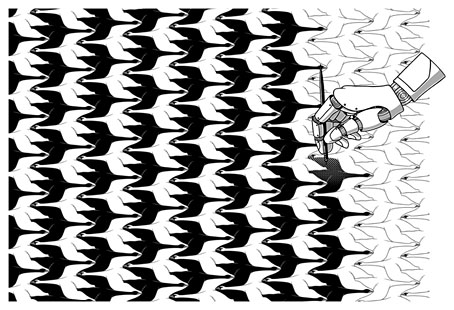
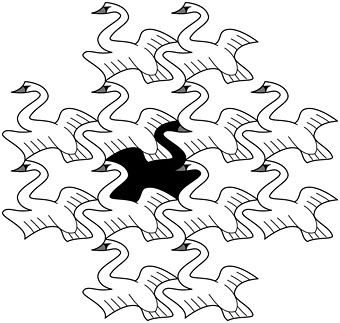
Wow, that’s some beautiful stuff! I especially love the Escher-influenced pieces. Thanks so much for this.
Thanks!
Oh John they look amazing, I have been waiting and waiting for this to be released since I first heard about it last year, I hope to order it soon as it gets a Stateside release which I THINK? is this month
Well done as always :)
Thanks, David, it was a great book to work on. I’m looking forward to seeing the print edition myself. And, yes, it should be reaching the shops in the next week or so.